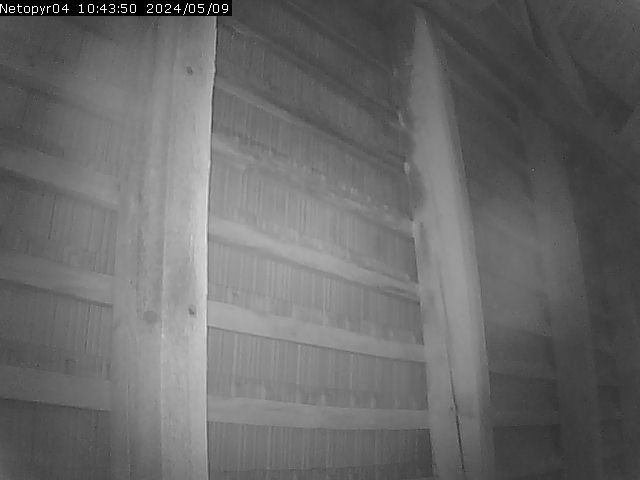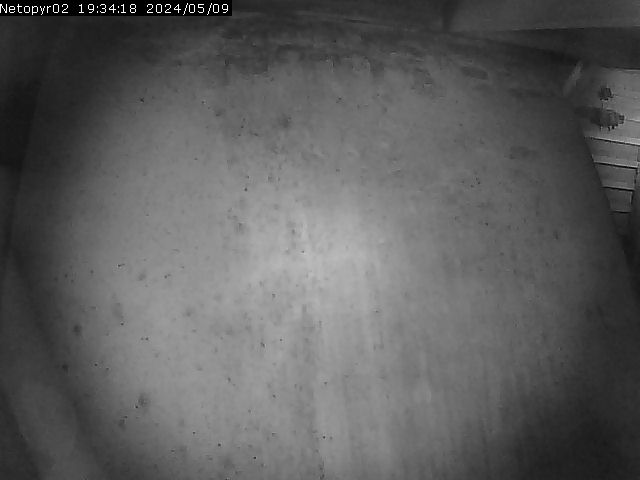This project is with grant from platform "Biodiversity Guarding" Czech conservationist association, Forestry of the Czech Republic state enterprise, Ministry of the Environment of the Czech Republic
.
Exordium
Hi people,
let me introduce myself. I am the oldest female in a nursery colony of the Great Mouse-eared Bat (Myotis myotis), traditionally inhabiting the attic in one of the houses at Kvítkov. I am more than 35 years old and have spent almost all summer seasons under this roof. Along with other females, we arrive here in late May. We are a really big family, including up to 450 bats, which is a standard colony size in our species in the Czech Republic. During June, we usually give birth to one offspring. The young is naked, blind and reaches about 20% of our body mass, so the birth is quite difficult and exhausting. We carry the young on our belly when hunting, so they can learn how to fly outside and obtain food. Later on when the young get too heavy, we leave them in the colony, by that time they also have become hairy enough to keep warm. Each night there is thus a kindergarten of our youngsters in the attic. In the meantime we fly around in the woods, often more than 10 km from the colony, and hunt prey. Beetles, especially carabids, are most delicious. Yum. But we need to take at least as much as a half of our weight. Each of us reaches 25 to 40 g, so we have to work hard. Besides, we need to return to the colony quite often to suckle the young. Each time when I arrive I call my young. The youngsters also give calls, but I can recognise my own young and hurry up to feed it. Our attic is a safe oasis, but the same cannot be said for the world outside, with cats, martens, owls and other dangerous animals lurking around.

Unfortunately, despite our intensive care of the young, which lasts for about two months, many of them die. We manage to rear about six out of ten juveniles. Neither these have an easy life, they have to learn to fly and hunt within a few weeks. It is August by then and our colony disperses, it is time to leave the summer roost and move to hibernacula. The young have to become independent and all of us need to build sufficient fat reserves to survive the winter when there is mostly no chance to find food. Some of the young may stay in the attic until November but then they have to move elsewhere.
The autumn countryside is beautiful and we visit some sites suitable as winter roosts, such as caves, mines, cellars and similar places. We do not move to the hibernacula together, actually each of us may choose a different way to the winter roost, often situated several hundreds of kilometres from each other. On the other hand, several tens of bats from one colony may meet in one hibernaculum. On the way we visit different social places, often entrances to potential winter roosts. Males who have spent the whole summer solitarily wait at these sites. They try to impress us, call us, lure us. We mate there but only the second-year bats may take part in mating for the first time. After mating we store the male´s sperm in the uterus, which is less energy demanding than to keep a fetus in the uterus during hibernation. The hibernation is a deep sleep, when the heartbeat and breath frequency is decreased and our body temperature drops from 40°C to the surrounding 2-7 °C. In this period we prefer places with stable temperature and high humidity. However, we wake up several times during winter. In spring when the weather conditions are favourable, our body releases an egg which is fertilised by the stored sperm. At that time we already return to our summer roost where, after short gravidity, we give birth to our young.
Caring people who are interested in bats and call themselves chiropterologists have placed four web cameras in our colony. Thanks to that you can visit us anytime and watch our life in the summer roost. Don´t worry, we are not disturbed by the cameras, although we can see quite well – similarly as your dog. The cameras are equipped with infrared light which our black-and-white sight cannot perceive. In case you would like to support us or other bats, do not hesitate to contact us on the web site. Thank you very much.








